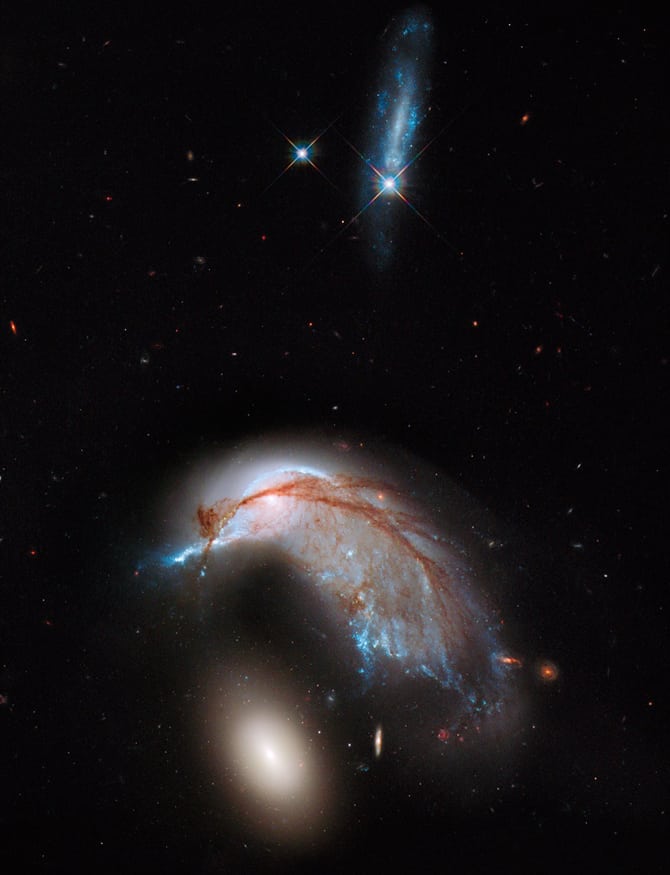The Cosmos with Arp 142
This interacting galaxy duo is collectively called Arp 142. The pair contains the disturbed, star-forming spiral galaxy NGC 2936, along with its elliptical companion, NGC 2937 at lower left.
Once part of a flat, spiral disk, the orbits of the galaxy’s stars have become scrambled due to gravitational tidal interactions with the other galaxy. This warps the galaxy’s orderly spiral, and interstellar gas is strewn out into giant tails like stretched taffy.
Gas and dust drawn from the heart of NGC 2936 becomes compressed during the encounter, which in turn triggers star formation. These bluish knots are visible along the distorted arms that are closest to the companion elliptical. The reddish dust, once within the galaxy, has been thrown out of the galaxy’s plane and into dark veins that are silhouetted against the bright starlight from what is left of the nucleus and disk.
The companion elliptical, NGC 2937, is a puffball of stars with little gas or dust present. The stars contained within the galaxy are mostly old, as evidenced by their reddish color. There are no blue stars that would be evidence of recent star formation. While the orbits of this elliptical’s stars may be altered by the encounter, it’s not apparent that the gravitational pull by its neighboring galaxy is having much of an effect.
Above the pair, an unrelated, lone, bluish galaxy, inconsistently cataloged as UGC 5130, appears to be an elongated irregular or an edge-on spiral. Located 230 million light-years away, this galaxy is much closer to us than the colliding pair, and therefore is not interacting with them. It happens to lie along the same line of sight to foreground Milky Way stars caught in the image.
Arp 142 lies 326 million light-years away in the southern constellation Hydra. It is a member of the Arp catalog of peculiar galaxies observed by astronomer Halton C. Arp in the 1960s.
